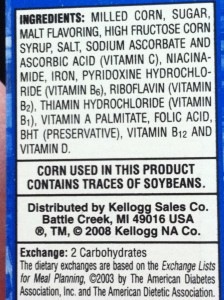 It’s not stretch of hot white sand. It’s also not where you can come upon an oasis, shimmering in the heat, and find platters laden with fresh fruit like in old-time movies.
It’s not stretch of hot white sand. It’s also not where you can come upon an oasis, shimmering in the heat, and find platters laden with fresh fruit like in old-time movies.
Here’s what it is: the CDC defines a food desert as an area “that lack(s) access to affordable fruits, vegetables, whole grains, low-fat milk, and other foods that make up the full range of a healthy diet.”
How Does A Food Desert Affect Health?
It would seem pretty obvious that if there isn’t a readily available supply of good food for people to buy and eat then they won’t eat healthy food.
But here’s the problem: many food deserts may not have a lot of affordable healthy food choices available, but they may have readily available and inexpensive fast food choices.
The CDC indicates that some researchers think a link exists between having easy access to affordable healthy foods and the consumption of those foods. But other studies show that even when healthier food options are available in food deserts, many people continue to make unhealthy choices based on their own personal preferences — or put more simply — because they want to.
Food Choices May Be Unrelated To The Availability Of Healthy Food
A study of 5,115 people, just published in The Archives of Internal Medicine, looked at fast food and fruit and vegetable consumption compared to the availability of fast food restaurants and groceries. The researchers found that in “food deserts,” where fast food is readily available and there are few or no supermarkets, the local population is drawn to the fast food. But even where there are supermarkets and groceries the food choices the locals make don’t seem to be based on healthy eating.
The results showed that in low-income areas, particularly among men living within one to two miles of a fast food restaurant, there’s a strong association between the availability of fast food and how much of it they consumed. But, they also found that there was no strong association between living near a supermarket and eating more fruits or vegetables.
Are Supermarkets Important?
The lead researcher says that it isn’t enough to expect that building supermarkets will make people shop for healthy foods in them. She thinks that healthy foods need to be promoted and affordable and that people also need to be taught that there are better and healthier food choices available in fast food restaurants, too. If someone chooses to go to a fast food restaurant they should have the option to find and choose food items that are “relatively more healthy as opposed to less healthy.”
However, just because there might not be a strong association between food choices and supermarkets doesn’t mean that markets aren’t important. It might be that the market may not be stocked with an abundance of healthy food choices or that the healthier options are expensive and crowded out by an overwhelming array of unhealthier options.
What Is Important?
It’s not enough to just teach people what’s healthy and how to make healthy choices. The food environment is crucial and needs to support making healthy food choices easy, attractive, affordable (competitive with the “cheap” calories of fast food), and the cool choices to make. Just like the oasis in the sandy dessert, there needs to be a welcoming oasis of healthy food choices in the “food deserts.”





